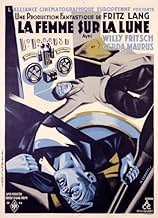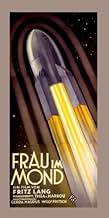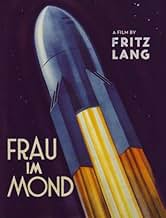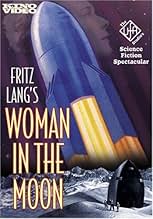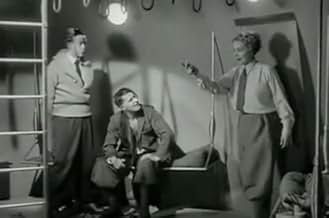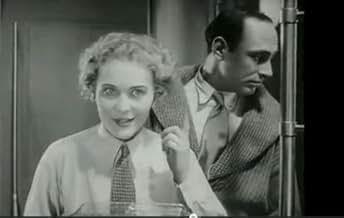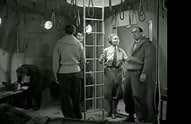CALIFICACIÓN DE IMDb
7.3/10
4.1 k
TU CALIFICACIÓN
Un científico tenaz despega hacia la Luna con la esperanza de encontrar riquezas allí.Un científico tenaz despega hacia la Luna con la esperanza de encontrar riquezas allí.Un científico tenaz despega hacia la Luna con la esperanza de encontrar riquezas allí.
- Premios
- 1 nominación en total
Gustl Gstettenbaur
- Gustav
- (as Gustl Stark-Gstettenbaur)
Gustav von Wangenheim
- Hans Windegger - Engineer
- (as Gustav v. Wangenheim)
Alexa von Porembsky
- Eine Veilchenverkäuferin
- (as Alexa v. Porembska)
Heinrich Gotho
- Der Mieter vom II. Stock
- (as Gotho)
Alfred Loretto
- Zwei eindeutige Existenzen
- (as Loretto)
Max Maximilian
- Grotjan, Chauffeur bei Helius
- (as Maximilian)
Edgar Pauly
- Zwei eindeutige Existenzen
- (as Pauly)
Karl Platen
- Der Mann am Mikrophon
- (as Platen)
Mahmud Terja Bey
- Fünf Gehirne und Scheckbücher
- (as Terja Bey)
Hermann Vallentin
- Fünf Gehirne und Scheckbücher
- (as Vallentin)
Opiniones destacadas
Let's face it 'Woman in the Moon' is hardly one of the great Fritz Lang's best efforts: far, far too long, badly paced, ludicrously over-melodramatic and just plain silly. Nevertheless, it contains prescient details in regards to space travel and (as should be expected) looks absolutely fabulous. Lang even made claims that this was the first film to feature a rocket launch countdown and who are we to question him? One thing you can be certain of is that going to the moon would never again look so stylish. Even though this is the tail end of Lang's classic silent period, those who love films like 'Dr. Mabuse' and 'Spies' will still find much to enjoy here.
Frau im Mond may appear scientifically outlandish to the modern viewer, and the high-style expressionistic acting of its actors overdone, but nevertheless the film should be recognized as a landmark which impacted world history. The UFA studio commissioned a then small and marginal band of German amateur rocket aficionados centered around Hermann Oberth to work as technical consultants to the film's designers, and UFA even commissioned them to build a rocket to be fired at the film's premier in Berlin. The rocket wasn't completed in time, but the laboratory furnished by UFA, not to mention the heady excitement of a brush with the highest level of cinema, and the salutory infusion of unexpected cash, together set some of these young rocketeers on their life paths. These included Willy Ley, and a young Prussian aristocrat engineer named Wehrner von Braun.
When the Nazis came to power, Fritz Lang parted with his wife and partner Thea von Harbou and came to Hollywood. The production models of the liquid-fired rockets from Frau im Mond were so advanced that in 1936 the Gestapo seized them as state secrets. Werhner von Braun went on to develop the brilliant Nazi terror weapon known as the V-2. Post-war, the V-2 and its German designers begat both the American and Soviet space programs. All subsequent space history was profoundly influenced by these developments. Frau im Mond maintains its impact to the present day. For just one example-- purely as a dramatic device to build tension before the rocket's lift-off to the Moon, Fritz Lang introduced title cards counting down from ten to one. The "countdown",as it became known, was so successful that NASA and everybody else has been doing it ever since.
When the Nazis came to power, Fritz Lang parted with his wife and partner Thea von Harbou and came to Hollywood. The production models of the liquid-fired rockets from Frau im Mond were so advanced that in 1936 the Gestapo seized them as state secrets. Werhner von Braun went on to develop the brilliant Nazi terror weapon known as the V-2. Post-war, the V-2 and its German designers begat both the American and Soviet space programs. All subsequent space history was profoundly influenced by these developments. Frau im Mond maintains its impact to the present day. For just one example-- purely as a dramatic device to build tension before the rocket's lift-off to the Moon, Fritz Lang introduced title cards counting down from ten to one. The "countdown",as it became known, was so successful that NASA and everybody else has been doing it ever since.
I saw the original premiere presentation director's cut of this movie in January of 2003, with excellent musical accompaniment by Dennis James at the Paramount theater. Perfect, restored print, a movie that I have always wanted to see (since it was mentioned in Carlos Clarens "Horror Movies" first published in 1967). HOWEVER... The tendency toward "original, premiere presntation" director's cut reached new heights of lunacy (pun intended) with this movie. It ran more than three hours and 40 minutes! According to it's IMDB entry the original version that ran in the US was 95 minutes with longer versions (running time up to 2 and a half hours) running in Europe. At times I felt as if I had been placed in hypersleep in prep for a deep space expedition of my own! The film certainly lived up to advance billing, yet certain things, like the 45-minute opening dinner scene, were obviously way longer than they needed to be. One doesn't need to be a genius to know that after the premiere, Fritz Lang probably cut the dinner scene to about three minutes, removed whole sections, and generally tightened up an otherwise improbable story. For example, the moon is portrayed as a rather pleasant (if poorly stocked with resources for survival) beach resort. Everyone runs around in sweaters and jodhpurs, and true love seems destined to survive the wait for a return rescue rocket. Other stuff was great: the launch pad, countdown and the experience of the G forces on blastoff were, well the archetypal events for all the space operas to follow. A good movie, but probably seen to much better effect on video or in the shorter release version (if either ever turns up).
The new Kino DVD release of 'Woman In The Moon' is a great addition to anyone's Fritz Lang collection. Once again, the new music composed for the film adds tremendously to the experience. I was astounded by how ahead of its time this movie was in terms of its science, and it was no surprise to read that Ufa had a team of science consultants working with Lang to supply realistic details. The use of the rotation of the Earth to provide extra impetus to the rocket, the way the booster rockets were discarded as the spaceship moved further out of the Earth's atmosphere - having grown up watching real moon launches in the 60s, it was astonishing to see the actuality echoed by fiction decades earlier. There was clearly a lot of attention to detail; they even figured out ways of conveying weightlessness in space, which were pretty advanced for the time. The special effect of trying to pour a bottle of wine without gravity was both funny and impressive. The movie is not one of Lang's great masterpieces, and I agree with other comments that point out that it tends to slow down in places. Lang always did like making long, long movies, and when he settled down to tell a story, he could really take his time getting everything perfect. When this involves people just sitting or standing in a room talking, it can get a little tiresome - in one scene, Helius is trying to get through on the phone to his partner Windegger, and it takes so long he has time to snip to pieces a big bouquet of flowers on the table in front of him. I swear, it seems to be happening in real time; if there were something exciting happening in the meantime somewhere else it might have passed more quickly, but we just keep cutting between a scene of a man impatiently holding a phone to his ear and snipping at flowers, and a scene of people sitting at a dinner table listening to a speech. Not even Lang can make this gripping, though I think he was defiantly determined to try. On the other hand, there are places where it works well. The long buildup to the rocket launch is terrific - I would have enjoyed it if it were even longer. The hangar in the darkening scene, lit with jumpy spotlights as the moon begins to rise, the slow, smooth monumental sliding of that massive machinery as the rocket glides forward to its launch position, dwarfing the human beings walking alongside it, and all the beautiful changes of camera angle to draw in the viewer, are very moving. I can see why the Nazis liked Lang and wanted to get their claws into him; if they could have harnessed him to make THEIR kind of movies, he'd have been a real prize for them, another Riefenstahl. 'Woman In The Moon' wasn't a hit at the time, mainly because Lang (as usual) wouldn't listen to the studio heads who wanted some concessions to the coming of sound technology, so it was a dinosaur silent movie when the public was engrossed with something new. But it is definitely worth watching, and its strong points are worth sitting through some tedious slow patches to enjoy.
The first half of this film; the set-up of the flight, the introduction to the main characters, a love triangle, and an international conspiracy; is frankly boring. But once the flight begins, action tenses up and things get interesting.
For 1929, the science is sometimes prescient-- a three stage rocket, a vertical assembly building, and a monstrous rolling gantry crawler-- are suggestive of the Apollo program. Other times the science is more romantic, using dowsing rods and an egg-shaped moon. The eggy moon allows a far-side with a breathable atmosphere. But an eggy moon really isn't less scientific than faster than light travel, which is a staple of modern space flight science fiction. FTL travel is simply a mechanism whereby a cast of characters can visit multiple star systems; the eggy moon allows the visit to a breathable world in the context of a 1930s Europe.
This movie understandably has fairly primitive special effects. One major effect, a rotating barrel decorated as the moon, is charming.
The ending is definitely touching. In the sub-genre of science fiction/space flight, this is an important and interesting film and well worth suffering through the first half.
For 1929, the science is sometimes prescient-- a three stage rocket, a vertical assembly building, and a monstrous rolling gantry crawler-- are suggestive of the Apollo program. Other times the science is more romantic, using dowsing rods and an egg-shaped moon. The eggy moon allows a far-side with a breathable atmosphere. But an eggy moon really isn't less scientific than faster than light travel, which is a staple of modern space flight science fiction. FTL travel is simply a mechanism whereby a cast of characters can visit multiple star systems; the eggy moon allows the visit to a breathable world in the context of a 1930s Europe.
This movie understandably has fairly primitive special effects. One major effect, a rotating barrel decorated as the moon, is charming.
The ending is definitely touching. In the sub-genre of science fiction/space flight, this is an important and interesting film and well worth suffering through the first half.
¿Sabías que…?
- TriviaThis film shows the first countdown to the launch of a rocket - not just the first one in a movie, but the first ever. It was invented as a dramatic device for the movie. Previously, all launches were begun with a count upward from zero to a designated number (usually ten). Also depicted for the first time are the use of liquid rocket fuel, a rocket with two stages, and zero gravity in space.
- ErroresWhen Helius listens for Friede's heartbeat, fearing that the launch may have killed her, we can see her breathing heavily.
- Citas
[Opening intertitle]
The Author: "Never" does not exist for the human mind... only "Not yet."
- Créditos curiososFritz Rasp is billed in the opening credits as "Der Mann, der sich Walter Turner nennt" or "The man who calls himself Walter Turner."
- Versiones alternativasThe film was given a release from Kino Internation on DVD, running a length of 169 minutes. The 2000 restoration runs 200 minutes. The original showing in the United States ran 156 minutes and was later cut to 95 minutes.
- ConexionesEdited into Histoire(s) du cinéma: Le contrôle de l'univers (1999)
- Bandas sonorasHeimlich singt für uns die Liebe
Music by Willy Schmidt-Gentner
Lyrics by Fritz Rotter
Sung by Gerda Maurus and Willy Fritsch
Selecciones populares
Inicia sesión para calificar y agrega a la lista de videos para obtener recomendaciones personalizadas
- How long is Woman in the Moon?Con tecnología de Alexa
Detalles
- Fecha de lanzamiento
- País de origen
- Idioma
- También se conoce como
- Woman in the Moon
- Locaciones de filmación
- Productoras
- Ver más créditos de la compañía en IMDbPro
- Tiempo de ejecución2 horas 36 minutos
- Mezcla de sonido
- Relación de aspecto
- 1.33 : 1
Contribuir a esta página
Sugiere una edición o agrega el contenido que falta

Principales brechas de datos
By what name was Frau im Mond (1929) officially released in India in English?
Responda
